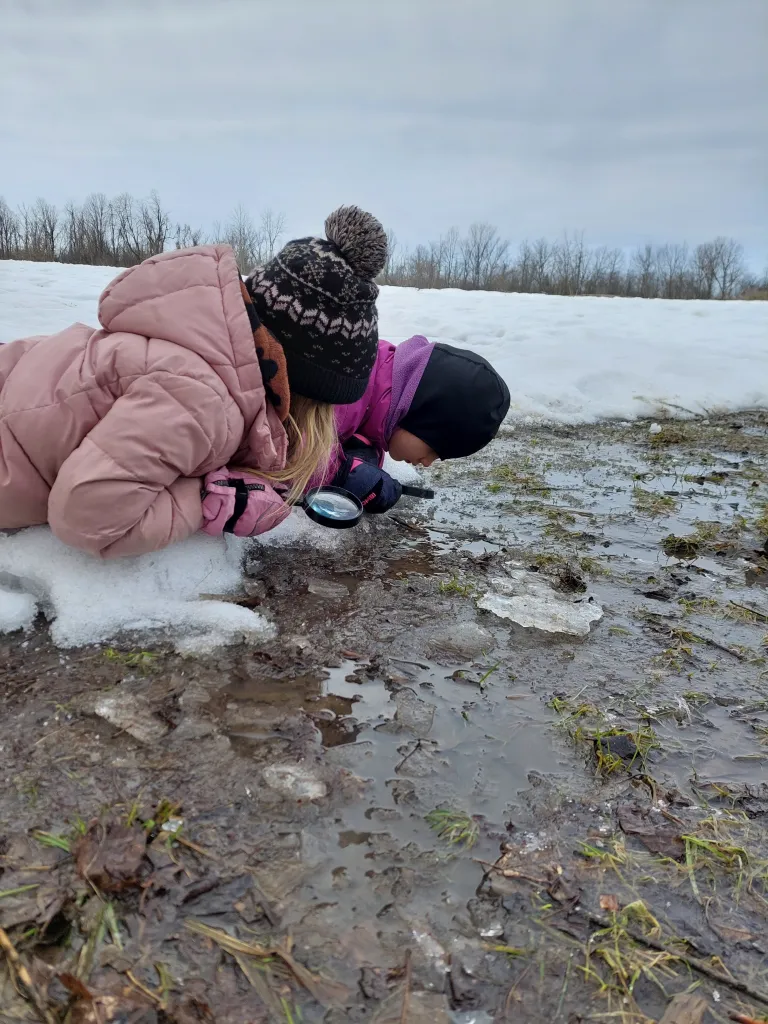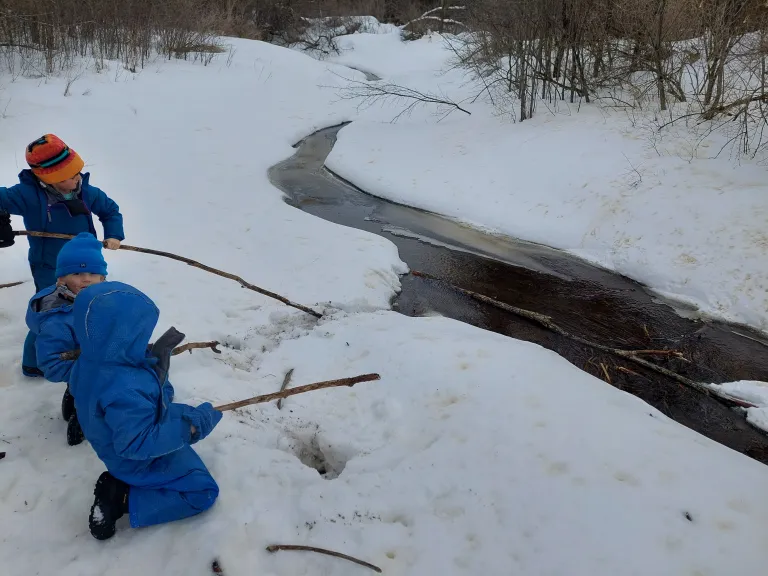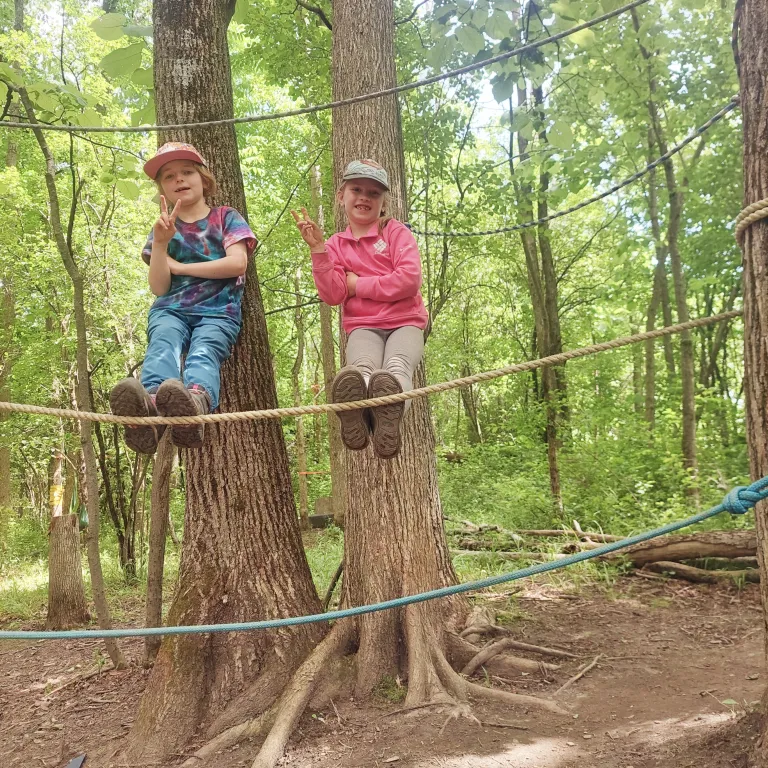Gentle suggestions for persisting through resistance.
Full Disclosure: I am writing this article as a member of the Out to Play community who dabbles in many roles. In my day to day life, I am an educator to children at Out to Play. In my writing, I am a storyteller with adults. And in all moments, I am a parent. My skills and stories in some ways stretch seamlessly between these roles, but my performance in each is not always a reflection of other parts of my life. If you have seen me smoothly and professionally help your young person work through something at forest school, that isn’t necessarily an indicator that I am as smooth and professional when faced with resistance from my own child. So the advice and support that follows is given with the acknowledgement that we are all doing our best in every moment. These ideas shared here are meant to provide you with tools and options, but not to impose guilt upon you if you catch yourself not saying the right thing. We’re all in this together!
If you are sending your child to forest school at Out to Play, it’s likely that you are someone who is invested in recognizing and validating your child’s voice and autonomy. When your child looks at you and says “I don’t want to go to Forest School,” especially when they have a reasonable explanation for feeling that way, it can feel tricky to validate their feelings while also following through with something that you as the caring adult have decided is the right choice for them.
You know your children best–-sometimes, it’s the right choice for them to sit the day out. There may also be days when you, as the caring adult, have decided that forest school IS the right choice for the day, no matter how your child is feeling. So how do you compassionately, caringly and also productively handle this reluctance?
There is no one easy answer to this question. (If there was, I would be using it with my own child, who is only human and who sometimes doesn’t want to go to forest school.) However, there is value in better understanding a child’s reluctance, so we are able to help, while still supporting their voice and autonomy.

Understanding reluctance: when might we expect it to show up?
There are times when a child’s reluctance to attend forest school follows a developmentally expected rhythm. If a young person is at an age or a stage where they are otherwise exploring the boundaries of their control, we should not be surprised if that shows up around forest school. Similarly, when there are other transitions happening in a child’s life, forest school can seem like another scheduled imposition to resist. As educators, we see more resistance in September to October, as many young people are transitioning back to the classroom, as well as forest school.
One parent has noticed weekly and seasonal rhythms, writing “Transitions are hard! Especially for small children. One minute they are wearing shorts and t-shirts, and the next minute they are in parkas and mitts. One day they are at school sitting at a desk all day, and the next they are outside all day at forest school.”
It can sometimes be helpful to understand if part of your child’s reluctance could be rooted in challenges they’re experiencing elsewhere. If that is the case, going to forest school is a pretty good place to explore feeling those feelings safely.

How can we help a young person persist through reluctance to attend Forest School?
Our staff at Out to Play all undergo training in PACE, the acronym for a trauma-informed therapeutic toolbox that invites us to use Playfulness, Acceptance, Curiosity and Empathy when a child is feeling stuck. PACE relies on the idea that a child needs to feel emotionally safe in order to learn and move through stuck moments.
PACE asks us to slow down and be with children in their feelings, to instill a sense of comfort and validation before we move on to solutions.
The ideas of PACE don’t need to be applied in a specific order, and not each option is appropriate for the scenario you are alongside. Sometimes you will sense that playfulness is not the right response. I often find that PLAYFULESS is the lowest barrier way to connect with a child in spite of a perceived conflict of goals. Meeting a child’s resistance to attending forest school with playfulness can, in some cases, provide them with a way out of a stuck moment, without feeling they are being asked to “concede” or give anything up. Perhaps my child doesn’t want to go to forest school that morning, and have told me it’s because they don’t want to wear their snowsuit. I might respond with a serious sounding “Alright then…[sigh] I will wear the snowsuit,” to (potentially) elicit a giggle, or a least a funny look, and hopefully, a break in the adversarial feeling. Being playful needs to be done respectfully. But you can absolutely use playfulness or absurdity to re-connect or repair after you’ve had to hold a line.
ACCEPTANCE asks you, the caring adult, to accept the child’s feelings – without judgement and without trying to change what they are expressing to you. You accept the feeling they are feeling, and then, when possible, you move on around it. “I accept that you are refusing to put on your snowpants before we leave. As the caring adult who knows you will need them, I will bring them along. You can decide if you want to put them on in the car, or when you get to the tent.” Acceptance says, “I’m here for you, I care about you. I can’t necessarily change our plan but I’m here to help.”
CURIOSITY is the next option available in PACE. Some children may be very happy to tell you why they are stuck or reluctant to go. Others may need questions, either open-ended or direct. “Tell me more about not wanting to go.” In some situations, you might need to ask yes or no questions. For our stuck quiet friends some parents use a subtle thumbs up or down instead of a yes or a no, as an accessible way of getting information in the moment. The hope is that you will gain some useful information about your child’s reluctance.

The value in demonstrating curiosity is also that your child will feel that you are making an effort to understand what they are feeling. Maybe through curiosity you will learn something useful, like they don’t want to go because their rubber boots are too tight. Your child also might share reasons that you are not able to fix. But the point here isn’t to always create solutions. It’s to tease the understanding out, to be able to imprint upon your child the message that you are truly genuinely curious about the way they experience the world.
Finally, our acronym PACE leaves us with EMPATHY, which in practice is much, much harder that one might think. Empathy asks that we hear how the child is feeling, and we sit in that feeling alongside them without trying to change it. If your child says, “I don’t want to go to forest school because I don’t have any friends,” your first inclination might be to challenge this statement. “Of course you have friends. I know you played last week with So and So at the bird restaurant.” You might want to challenge this statement because you know it’s factually untrue, and you might want to challenge this statement because it’s hard to hear, and you want to provide them with evidence for why they don’t need to feel that way. But empathy asks us to say, “WOW that must be a hard feeling to have.” Empathy asks us to stay with and explore that feeling. Try not to offer solutions or reasons to feel differently. Just let them know you’re there to feel it with them. “That must feel hard.” After a time, some children might appreciate you problem-solving with them. What we have learned through PACE, is that they need us to show understanding in an unhurried way, before we try to create solutions.
Suggestions from other parents
PACE doesn’t fix reluctance. PACE-ful approaches offer an opportunity to build relationship and support your child through different kinds of stuck moments. In addition to the above suggestions based on our PACE training, we solicited advice and reflections from parents in the Out to Play community who have faced this same resistance from their own children. They offered pragmatic, practical advice that has worked for them. Maybe it will be helpful for you or will spark something that is! See if you can tease out the PACE-ful communications you see in following examples from parents:
“When my kids don’t want to go to Forest School, sometimes they really do need a break, and we make that choice. But if I’ve decided it’s the right decision to take them that day, I try to validate their feelings (I hear you, you don’t want to go today, sometimes I have a hard time getting out the door, too) and look for solutions to the problems I can help them with, while holding the line about going. For example, sometimes putting something special in their lunch (thermos of tea/hot chocolate, a cookie) or finding the right gear to assuage worries about being wet or cold or itchy helps ease the way.”
Another parent has advice that centres their child’s opinion in pre-selecting what clothes and gear they will use, and encourages getting used to the clothes and gear on non-forest school days. “Maybe on the weekend put on all the layers and go on an outdoor adventure.”
And then, what to do when you have made it to forest school, and it’s still feeling tricky? You know that when you leave your child might grasp on to your hand and not let go. Or they’re already in tears at the thought of the approaching separation. As a parent I have felt this part extra hard, because this is where my own personal struggle becomes a public thing. Please remember that our community is infinitely accepting of whatever kind of morning you are having. Almost all of us have had hard drop-offs at one time or another.
From an Out to Play parent:
“If we’re having a particularly hard drop off, I try to be encouraging and positive while again validating feelings (I know this is feeling so hard today. You can do it!). I have found a quick, confident, upbeat goodbye is the best, like ripping off a bandaid. I usually narrate what’s going to happen as we walk down the path: We’re going to put down your stuff, and I’m going to give you a big squeeze, and say goodbye! Then I walk quickly and confidently away.
“Sometimes that doesn’t work, though, and my kids cling to me or follow me down the path. On those days, we have more hugs, and I usually recruit an Out to Play educator for help. I will ask the educator if they are comfortable hugging or holding hands with my child while I go, to keep them from following me. If they are comfortable with that, we repeat the process of talking through what’s going to happen with my child, encouraging them, and the quick goodbye.”

Why should I persist in the face of my child’s resistance?
All of the preceding advice is offered with the acknowledgement that it takes effort–emotional and physical, at the very least–to understand your child’s resistance to going to forest school. A tough morning is hard on everyone. And yet, you folks are making the hard choices to get your kids here. It’s remarkable, and a testament to your commitment to the value of outdoor play and connection to the land. This is where we encourage you ask your educators for help. Also, remember your “why.”
The regulating impact of a day of movement, outdoor play and connection with the land ripples out across weeks, months and years. The resilience children build by working through hard things with caring support is with them for the rest of their lives. The positive memories and sense of belonging they feel in the natural world offers them a comforting space to return to through adulthood.
“My partner and I have wondered – is it worth it? My honest answer is yes, it is worth it! Even if the send off has been terrible, I’ve never had a child come home and tell me they’ve had a horrible day and that they wish they hadn’t gone. They run up to me at pick up with smiles on their rosy faces, full of stories about their days.”
We are grateful for your efforts to persist in the face of reluctance! And we are here as a community to keep the conversation going.


